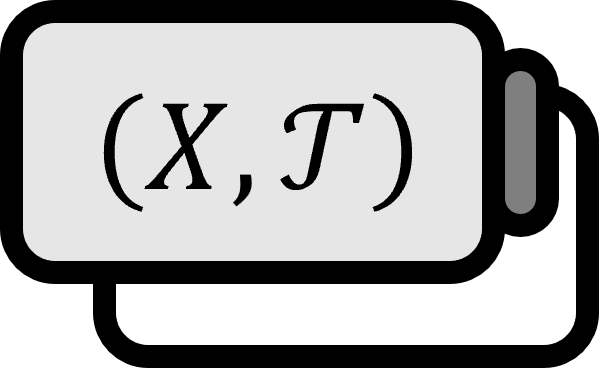Being a Space and Having All Finite Subsets Closed are Equivalent
Theorem
For $X$ to be a $T_{1}$-space, the necessary and sufficient condition is that every singleton set $\left\{ x \right\}$ is a closed set in $X$.
Proof
Given $(\Rightarrow)$,
for space $X$ being a $T_{1}$-space, if we let $x \in X$, $x' \in X \setminus \left\{ x \right\}$, then $x \ne x '$ applies. Since $X$ is a $T_{1}$-space, there exists an open set $U_{x’} \subset X$ that is both $x' \in U_{x’}$ and $x \notin U_{x’}$. Summarizing, $$ x' \in U_{x’} \subset X \setminus \left\{ x \right\} $$ and $$ X \setminus \left\{ x \right\} = \bigcup_{x’ \in X \setminus \left\{ x \right\} } U_{x’} $$ are open sets. Therefore, the singleton set $\left\{ x \right\}$ is a closed set in $X$.
Given $(\Leftarrow)$,
Since every singleton set of $X$ is a closed set, for $x_{1} \ne x_{2}$, $\left\{ x_{1} \right\}$, and $\left\{ x_{2} \right\}$ are closed sets in $X$. Consequently, $$ U_{1} := X \setminus \left\{ x_{1} \right\} \\ U_{2} := X \setminus \left\{ x_{2} \right\} $$ is an open set in $X$. Meanwhile, $$ x_{2} \in U_{1} x_{1} \in U_{2} $$ thereby $X$ is a $T_{1}$-space.
■
Explanation
Since the union of closed sets is still a closed set, it is reasonable to say that all finite subsets are equivalent to being closed.
